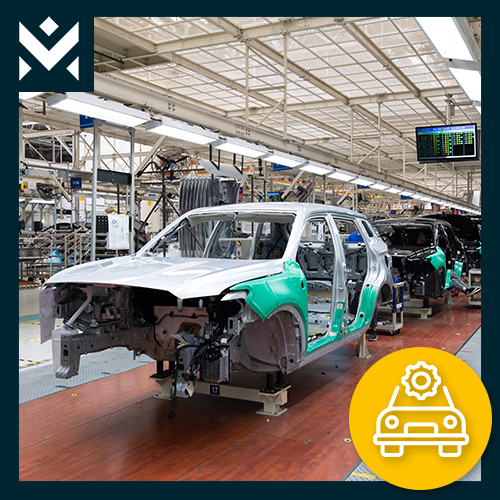
Automotive – Protection against mechanical risks
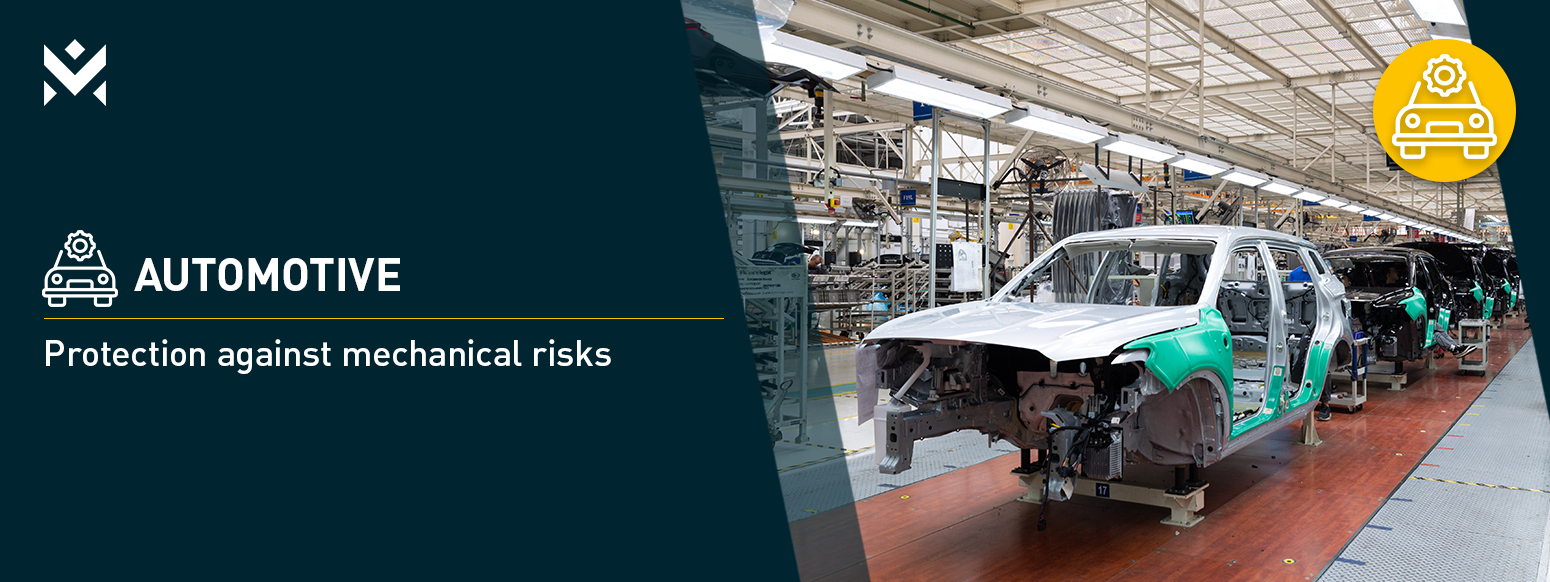
Automotive – protection against mechanical risks
Imagine: you work on the assembly line of an automotive workshop, surrounded by powerful machines and colleagues who are working with total dedication. You find yourself amid metal parts and the constant movement of conveyor belts. But this bustling environment also harbors danger. Every day, workers are exposed to mechanical hazards that, if not managed properly, can lead to serious accidents.
In this article, we discuss the five most common mechanical hazards and provide insight into the PPE you should use to best protect yourself while working. Finally, we also provide recommendations for appropriate PPE.
Mechanical risks
Mechanical risks are hazards that can occur when using machinery, tools or mechanical equipment. These hazards often arise from moving parts, such as rotating, pulling, pinching or cutting elements. Mechanical hazards can lead to accidents ranging from minor injuries to serious injuries.
What are the mechanical risks?
In the automotive industry, there are several mechanical hazards that workers may encounter. Below we discuss the five most common risks and the matching PPE you wear to best protect yourself:
Squeezing and pinching
- Assembly lines: workers can become trapped between moving parts of the production line, such as conveyors, gripper arms or press machines.
- Elevators and lifting systems: cars or parts of cars are often lifted by elevators, which can pose a risk of entrapment between the vehicle and the floor or other objects.
PPE:
- Protective gloves: wear sturdy gloves to protect your hands from entrapment.
- Safety shoes with steel toe caps: wear shoes that protect your feet from heavy, falling objects.
Our Recommendations:
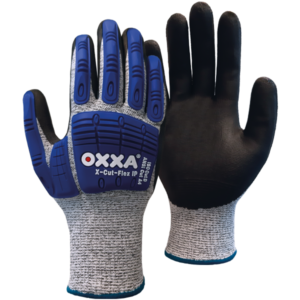 |
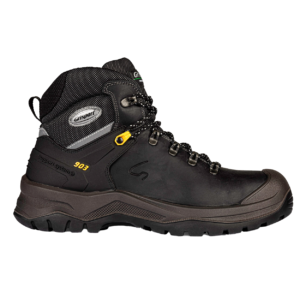 |
| OXXA® X-CUT-FLEX IP 51-705 GLOVE Art. No.: 1.51.705.00 |
GRISPORT 903L SAFETY SHOE S3 Art. No.: 5.12.440.00 |
Cutting hazard
- Metalworking: while machining various parts or cutting metal elements, there is an increased risk of cuts.
- Sharp edges: unprocessed metal parts of cars, such as sheet metal, may have sharp edges that cause injuries.
PPE:
- Cut-resistant gloves (EN 388:2016): wear gloves specifically designed to prevent cuts, especially during metal working.
- Protective clothing: wear appropriate clothing while working with sharp metal parts.
Our recommendations:
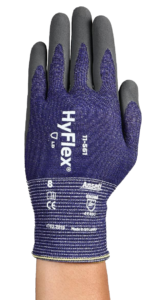 |
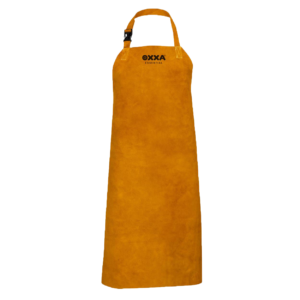 |
| ANSELL HYFLEX 11-561 GLOVE Art. No.: 1.90.218.00 |
OXXA® MARTY 0101 WELDING APRON Art. No.: 2.70.101.00 |
Fall hazard from heavy components
- Engines and gearboxes: heavy components such as engine blocks or transmissions may fall during assembly, disassembly or transportation, causing serious injury.
- Unstable loads: supporting heavy components (such as axles or wheel suspensions) without proper stabilization can cause them to fall.
PPE:
- Helmet (EN 397): protect your head with a safety helmet in case a heavy component falls.
- Impact cap (EN 812:2012): a bump cap can be worn additionally in certain circumstances, especially in work environments where the risk of bumping into solid objects such as low beams or sharp edges is present. However, the bump cap does not provide protection against falling heavy objects and complies with the EN 812:2012 standard, which only provides protection against light impacts.
- Safety shoes: wear shoes with a steel toecap to protect your feet from falling objects.
Our Recommendations:
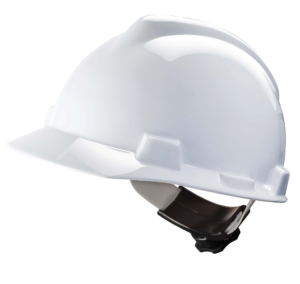 |
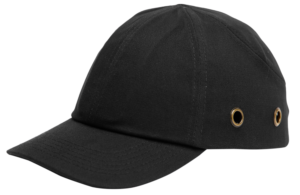 |
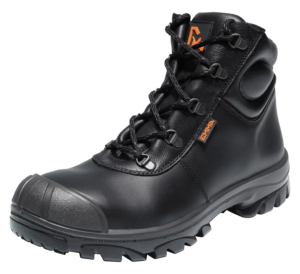 |
| MSA V-GARD SAFETY HELMET WITH FAS-TRAC III INTERIOR Art. No.: 6.16.861.00 |
OXXA® WASHINGTON 3020 BASEBALL CAP Art. No.: 6.13.021.00 |
EMMA LUKAS SAFETY SHOE S3 Art. No.: 5.93.310.00 |
Turning and friction
- Drills and grinders: these machines contain rotating parts that can grab clothing, hair or loose objects and pose a serious risk of injury.
- Fans and belts: open rotating parts, such as fans and drive belts in the engine compartment, can be a hazard if there is no shielding.
Take note: working with rotating parts requires constant alertness. A moment of inattention can have serious consequences. Always strictly follow safety precautions and be aware of the dangers around you.
PPE:
- Tight clothing and hair protection: wear tight-fitting work clothes and use a hair net or headgear to prevent hair from becoming entangled in machinery.
- Safety glasses: protect your eyes from loose particles from rotating machinery.
Our recommendation:
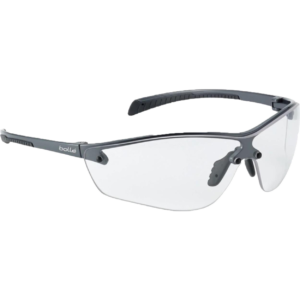 |
| BOLLÉ SILIUM+ SILPPSI SAFETY GOGGLES Art. No.: 7.25.434.00 |
Swaying and loosening parts
- Loose parts: parts or tools can be thrown out while working on vehicles, especially when using air tools or compressed air.
PPE:
- Face shield (EN 166): wear a face shield to protect your face from thrown parts.
Our recommendation:
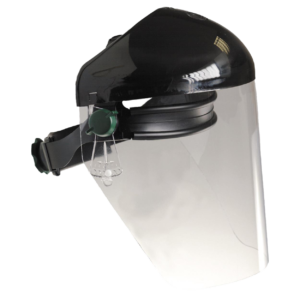 |
| HONEYWELL PERFO NOVA 820440 GELAATSSCHERM Art. No.: 7.33.110.00 |
Need help?
Would you like advice or additional information on suitable products for use in the automotive industry? Contact us today on T. +31 (0)181 47 50 00. Our enthusiastic team will be happy to tell you more!


